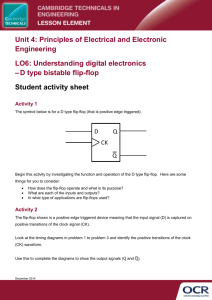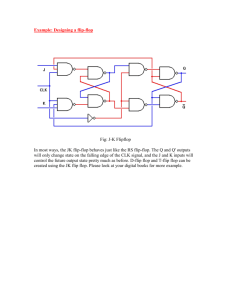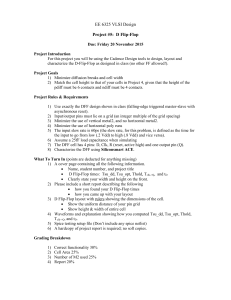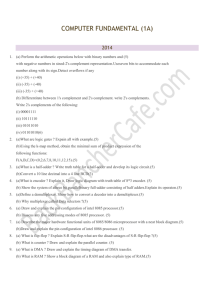University of California at Berkeley College of Engineering
advertisement
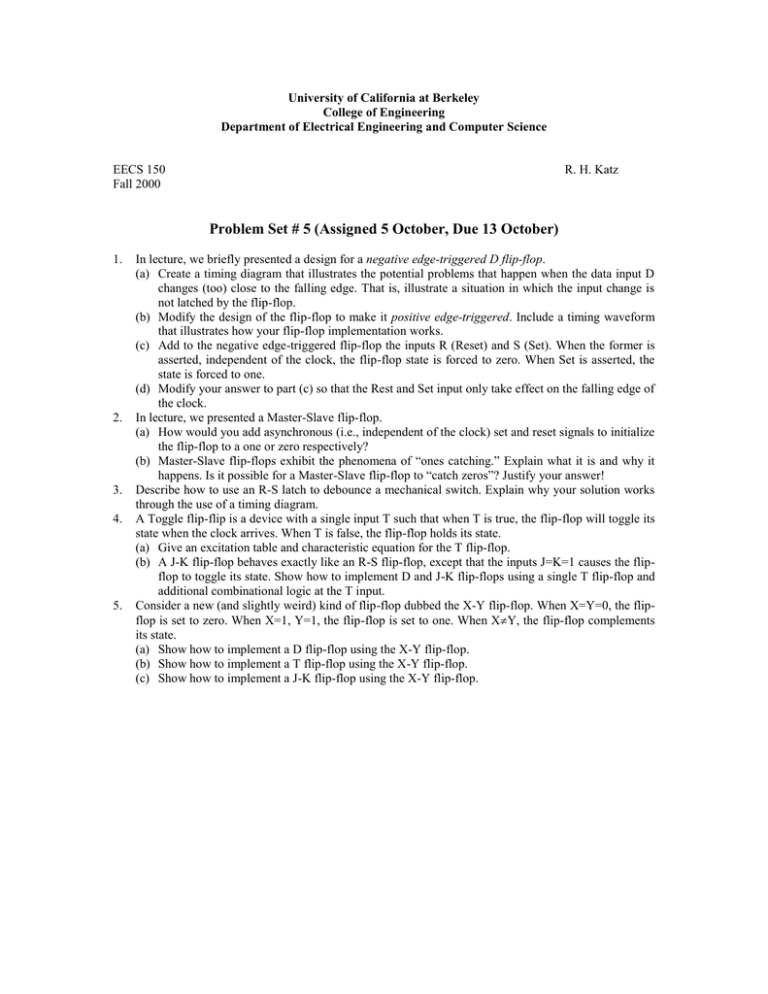
University of California at Berkeley College of Engineering Department of Electrical Engineering and Computer Science EECS 150 Fall 2000 R. H. Katz Problem Set # 5 (Assigned 5 October, Due 13 October) 1. 2. 3. 4. 5. In lecture, we briefly presented a design for a negative edge-triggered D flip-flop. (a) Create a timing diagram that illustrates the potential problems that happen when the data input D changes (too) close to the falling edge. That is, illustrate a situation in which the input change is not latched by the flip-flop. (b) Modify the design of the flip-flop to make it positive edge-triggered. Include a timing waveform that illustrates how your flip-flop implementation works. (c) Add to the negative edge-triggered flip-flop the inputs R (Reset) and S (Set). When the former is asserted, independent of the clock, the flip-flop state is forced to zero. When Set is asserted, the state is forced to one. (d) Modify your answer to part (c) so that the Rest and Set input only take effect on the falling edge of the clock. In lecture, we presented a Master-Slave flip-flop. (a) How would you add asynchronous (i.e., independent of the clock) set and reset signals to initialize the flip-flop to a one or zero respectively? (b) Master-Slave flip-flops exhibit the phenomena of “ones catching.” Explain what it is and why it happens. Is it possible for a Master-Slave flip-flop to “catch zeros”? Justify your answer! Describe how to use an R-S latch to debounce a mechanical switch. Explain why your solution works through the use of a timing diagram. A Toggle flip-flip is a device with a single input T such that when T is true, the flip-flop will toggle its state when the clock arrives. When T is false, the flip-flop holds its state. (a) Give an excitation table and characteristic equation for the T flip-flop. (b) A J-K flip-flop behaves exactly like an R-S flip-flop, except that the inputs J=K=1 causes the flipflop to toggle its state. Show how to implement D and J-K flip-flops using a single T flip-flop and additional combinational logic at the T input. Consider a new (and slightly weird) kind of flip-flop dubbed the X-Y flip-flop. When X=Y=0, the flipflop is set to zero. When X=1, Y=1, the flip-flop is set to one. When XY, the flip-flop complements its state. (a) Show how to implement a D flip-flop using the X-Y flip-flop. (b) Show how to implement a T flip-flop using the X-Y flip-flop. (c) Show how to implement a J-K flip-flop using the X-Y flip-flop.



